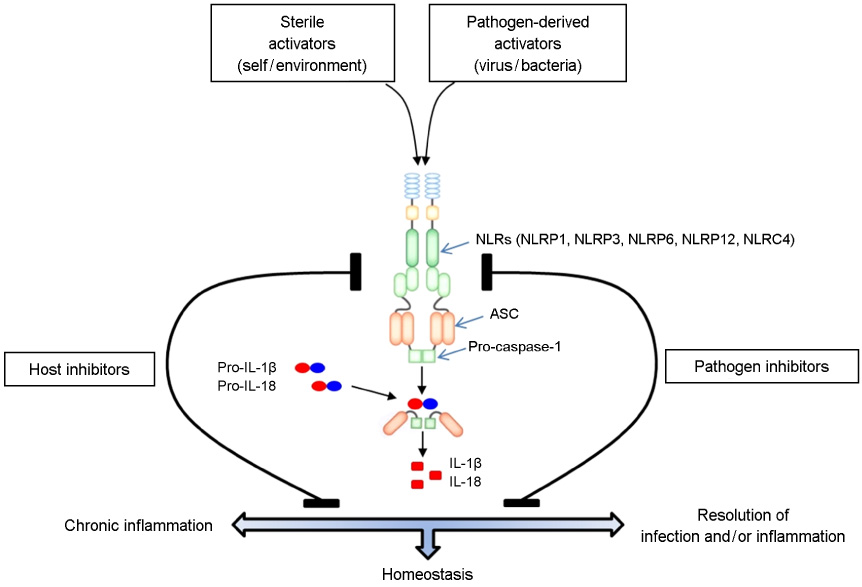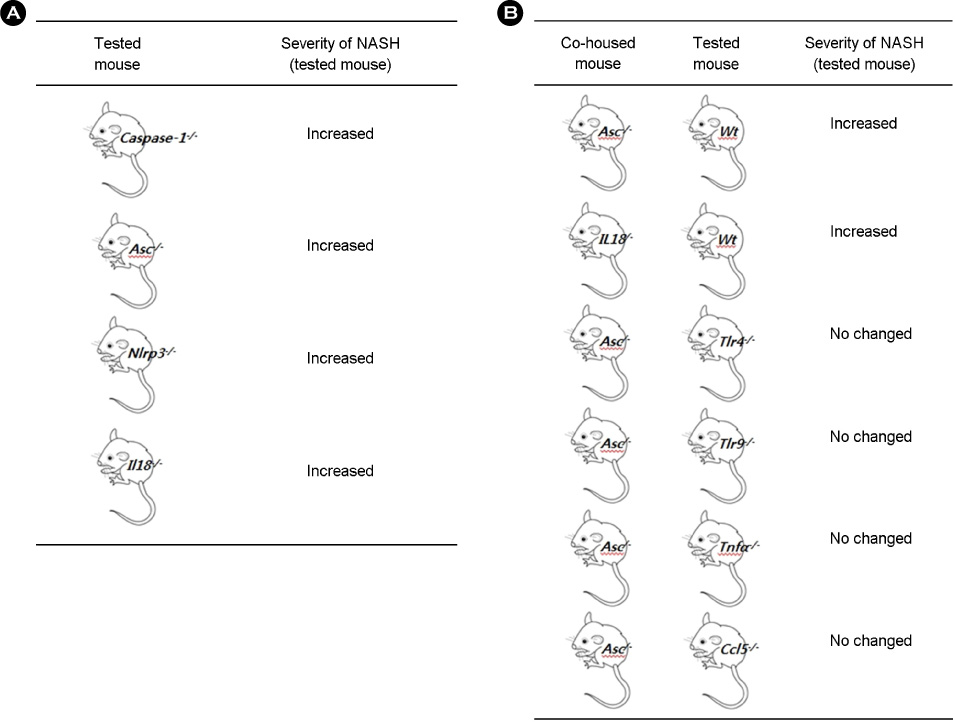J Bacteriol Virol.
2012 Dec;42(4):359-362. 10.4167/jbv.2012.42.4.359.
Regulation of Obesity and Non-alcoholic Fatty Liver Diseases by Modulation of the Gut Microbiota Through Inflammasome; its Mechanism and Potential for Clinical Use
- Affiliations
-
- 1Department of Biotechnology, The Catholic University of Korea, Bucheon, Korea. jhnam@catholic.ac.kr
- KMID: 2168673
- DOI: http://doi.org/10.4167/jbv.2012.42.4.359
Abstract
- The revelation that gut microbes are associated with the pathogenesis of human diseases such as obesity, colon cancer, inflammatory bowel disease and liver-related diseases has resulted in the role of gut microbes becoming a novel research topic in basic and clinical science. Recently, emphasis has been placed on the role of gut microbes in non-alcoholic fatty liver disease (NAFLD) and its progressive form, non-alcoholic steatohepatitis (NASH). Researchers have suggested that inflammasome deficiency-changed dysbiosis is associated with exacerbating NAFLD/NASH progression. This particular study also showed a direct 'gut-liver axis' regulated by modulation of gut microbiota. This paper (Nature 2012;482: 179-185) was summarized herein and the potential clinical applications were discussed.
Keyword
MeSH Terms
Figure
Reference
-
1. Henao-Mejia J, Elinav E, Jin C, Hao L, Mehal WZ, Strowig T, et al. Inflammasome-mediated dysbiosis regulates progression of NAFLD and obesity. Nature. 2012. 482:179–185.
Article2. Wen H, Ting JP, O'Neill LA. A role for the NLRP3 inflammasome in metabolic diseases--did Warburg miss inflammation? Nat Immunol. 2012. 13:352–357.
Article3. Hong S, Park S, Yu JW. Pyrin domain (PYD)-containing inflammasome in innate immunity. J Bacteriol Virol. 2011. 41:133–146.
Article4. Rathinam VA, Vanaja SK, Fitzgerald KA. Regulation of inflammasome signaling. Nat Immunol. 2012. 13:333–332.
Article5. Vandanmagsar B, Youm YH, Ravussin A, Galgani JE, Stadler K, Mynatt RL, et al. The NLRP3 inflammasome instigates obesity-induced inflammation and insulin resistance. Nat Med. 2011. 17:179–188.
Article6. Henao-Mejia J, Elinav E, Strowig T, Flavell RA. Inflammasomes: far beyond inflammation. Nat Immunol. 2012. 13:321–324.
Article7. Elinav E, Strowig T, Kau AL, Henao-Mejia J, Thaiss CA, Booth CJ, et al. NLRP6 inflammasome regulates colonic microbial ecology and risk for colitis. Cell. 2011. 145:745–757.
Article



